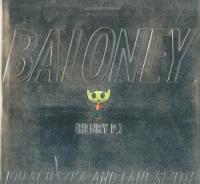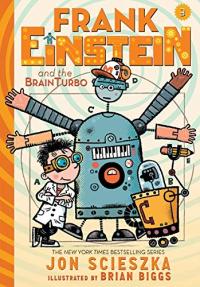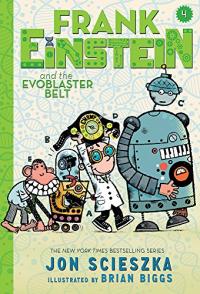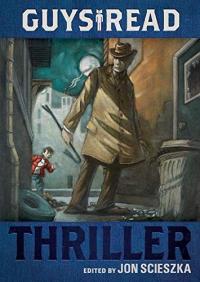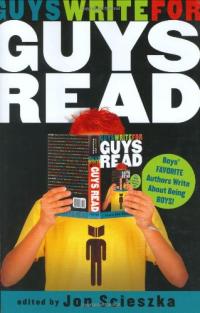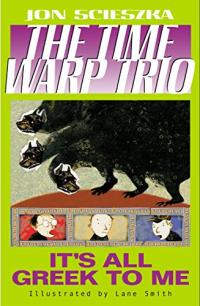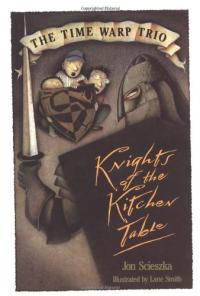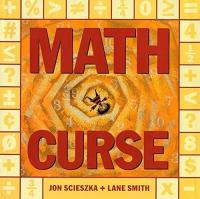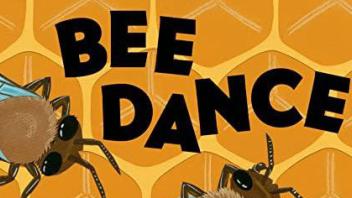
The first six clips you’ll find here were recorded at Jeff Kinney’s bookstore (An Unlikely Story) in Plainville, MA. In October 2017, five award-winning authors for young people — Jack Gantos, Jeff Kinney, Jarrett Krosoczka, Jon Scieszka, and Gene Luen Yang — gathered for a funny and insightful panel discussion about how to motivate boys (and any reluctant readers) to read more. Watch the panel discussion: How to Get and Keep Boys Reading.
The rest of our interview with Jon was recorded earlier in our WETA studio.
Biography
Jon Scieszka isn’t afraid to turn fairy tales inside out or introduce beef snack sticks into his stories. With titles like Math Curse, Science Verse, and Summer Reading Is Killing Me, Scieszka knows how to tell a good story, get a good laugh, and engage the reluctant reader. He and illustrator Lane Smith have collaborated on a number of bestselling picture books, including The True Story of the Three Little Pigs! and The Stinky Cheese Man and Other Fairly Stupid Tales.
In 2002, Scieszka founded the Guys Read literacy program to “help boys become better readers, better students, better guys.” And in early 2008, Scieszka was named the first-ever National Ambassador for Young People’s Literature by the Librarian of Congress. As the ambassador, Scieszka toured the country to raise awareness about the importance of children’s literature in supporting every child’s intellectual and emotional development and in fostering a lifelong joy of reading and learning. He also got to wear a pretty cool medallion.
Jon Scieszka was born in Flint, Michigan in 1954. He was one of six Scieszka brothers who grew up “wrestling in the living room, fighting at the dinner table, and taping up the babysitter.” During his Catholic school years, Jon told jokes in the back of class but managed to steer clear of the nuns’ rulers. After attending the Culver Military Academy for high school, Scieszka studied pre-medicine at Albion College in Michigan.
After finishing college Scieszka decided to become a writer instead of a doctor. He moved to New York City, earned a master’s degree in fiction writing, and started painting apartments. Eventually, he became an elementary school teacher and spent the next ten years in the classroom. While teaching second graders, Scieszka realized that he still wanted to be a writer, but for children instead of adults.
Jon Scieszka received numerous rejection letters from children’s publishers until his wife put him in touch with illustrator Lane Smith. Smith illustrated one of Scieszka’s manuscripts and the result was a bestselling picture book called The True Story of the Three Little Pigs! After their initial success, the mischievous duo teamed up again to create The Stinky Cheese Man and Other Fairly Stupid Tales, which won a Caldecott Honor award in 1993. Since then, Scieszka has enjoyed his new career as a children’s book author and has written many more favorites, including the popular Time Warp Trio series.
Jon Scieszka and his wife live in Brooklyn, New York. They have one son, one daughter, and one cat.
In October 2017, five award-winning authors for young people — Jack Gantos, Jeff Kinney, Jarrett Krosoczka, Jon Scieszka, and Gene Luen Yang — gathered for a funny and insightful panel discussion about how to motivate boys (and any reluctant readers) to read more. Watch the panel discussion: How to Get and Keep Boys Reading.
Playing with Dad
My dad’s most spectacular talent as a dad is his ability to play with his kids.
Yes, he was the dad who could help us six Scieszka brothers with the business of our math homework, our Science Fair project, our English class essay. But he was also the guy who would show us how to hammer a nail, and then give us a pile of wood, a bag of nails, and real hammers to hammer along with him.
He was the guy who inspired us all to play golf by taking us along to the driving range, and smacking the ball out of sight with one smooth swing.
Of course it would have been easier for him (and surely better for his golf game) to practice by himself, and play by himself. But he played with us. And we loved playing with him.
And the beautiful part of playing with your dad, is that you can keep playing.
We have played the Scieszka Family Golf Tournament — called the Coupe de Lou Classic after dad Lou — for twenty-seven years straight now. It is a chance for the Scieszka brothers, scattered across the country, to get together and play with each other and play with our dad.
And we love to play…with the guy who taught us how to play.
Find this author’s books on these booklists
Themed Booklist
A Gaggle of Giggles
Themed Booklist
Aliens! (And Other Strange Creatures)
Themed Booklist
Ancient Gods and Goddesses
Themed Booklist
Count, Think, and Play with Math
Themed Booklist
For Laughing Out Loud
Themed Booklist
Holiday Buying Guide 2004
Themed Booklist
Holiday Buying Guide 2009
Themed Booklist
Holiday Buying Guide 2015
Themed Booklist
Holiday Buying Guide 2019
Themed Booklist
Summer Reading Guide 2015
Themed Booklist

